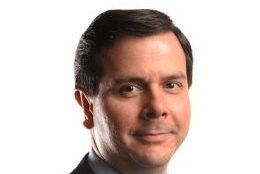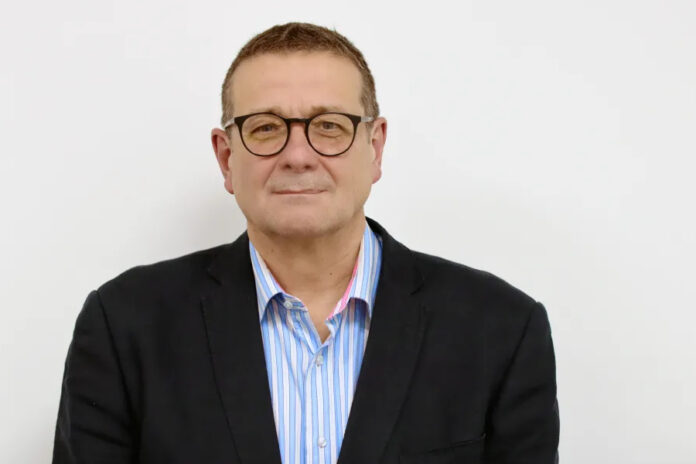Following the news that longstanding equities trading chief Dan Royal will be stepping aside this year, the transition team of Royal, his replacement Hugh Spencer, and EMEA chief Glen Pattison sit down exclusively with Global Trading to discuss the importance of positive change, building a desk culture based on reputation and relationships, and how they are working together to ensure a seamless Royal succession. In their own words…

As is often said, change is a constant. It’s how you prepare and structure for change that helps support your success. As recently announced, change is in the works with the equity trading department at Janus Henderson. This includes the upcoming retirement for global equities trading head Dan Royal, with the appointment and relocation of APAC’s Hugh Spencer for the global spot, the recent appointment of Glen Pattison to oversee the EMEA region, and the upcoming appointment of Ryan Chan as regional head of our APAC equity desk.
READ MORE – Royal Retirement: All change for Janus Henderson’s equity trading team
All of these moves were made seamless from a business perspective due to the efforts, culture and philosophy of our global equity trading team. There are multiple components to the foundation of our team that support our ability to adapt and evolve. Whether it be our internally curated succession, growth of the business, or innovative initiatives, our flat structure and harmonized global approach facilitates an environment to navigate these things with little or no business disruption. All of these have a common theme: Partnership.
“Trading desks are problem solvers, educators, workflow efficiency experts, and career builders.”

Trading desks sit at the intersection of many components with the industry and the firm. Desks often have one of the broadest swathes of representation for a firm’s footprint to the street, the vendor community, industry peers, and potentially the regulatory aspects of our business. Equally, desks can often be the centralized hub for connectivity and insight to a number of internal departments, in helping establish best practices and industry standards.
The culture and philosophy of the desk will have a significant impact on how a firm is perceived throughout the industry. Internally, the approachability and collaboration with surrounding departments can holistically lift the firm’s level of expertise and innovation. In other words, the culture and attitude of the trading department will have a large impact on the consistency of service levels and executional offerings from the street, regardless of potential fluctuations in commission wallet and AUM.
“It is often overlooked or underappreciated, the complexity that lives within the trading environment.”
When we think of external partnerships, we try to insert a symbiotic component to the relationship. Aside from the direct economics of involved, as measured by commissions or subscription fees, we attempt to strengthen that partnership more broadly. With the broker, we strive to be very collaborative in areas of product development, workflow efficiencies and connectivity of resources across our firms. We hope our efforts around product development with a broker will eventually serve their innovative efforts to enhance their efforts with other clients. We also strive to facilitate broader and stronger relationships across our firm’s key resources in a courteous manner. Among our vendors, we attempt to facilitate and accelerate innovation that yields more efficiencies and better outcomes.

Knowing that development resources can be limited and client requests can be diverse in nature, there is often a bigger picture component to the direction of our efforts. Vendors and brokers are certainly more interested in devoting development resources when the end result serves a larger subset of their client base.
Internally, the desks wear many hats. Generally, beyond our efforts of enhancing the investment process, through best execution, managing market events and team communication. Trading desks are problem solvers, educators, workflow efficiency experts, and career builders. It is often overlooked or underappreciated, the complexity that lives within the trading environment.
READ MORE – Dan Royal: The joy of buy-side trading
Combining the extensive variability of order flow, through a complicated matrix of systems into a dynamic market environment, while achieving the best outcome for the client, generally occurs very smoothly. Yet the nuances of that complex workflow often require a strong partnership with surrounding departments to properly develop and support the environment that facilitates operational success. Those partnerships are critical to a successful ecosystem throughout the firm.
At Janus Henderson, two foundational pillars of our equity trading team are global harmonization and a subscription to the notion that partnerships are critical to our ongoing success. Throughout the team, we recognize the importance of enhancing our partnerships both internally and externally. We move forward as a global team, where everyone’s contribution and attitude is critical to our firm’s success. With that in mind, the notion of succession and opportunities presented within the team is an organic step taken in stride for us.
© Markets Media 2024.












 Last summer, abrdn’s dealing desk started work on developing a new trading strategy, focusing on automating low-value trades that didn’t depend on dealer expertise. It’s the first time the firm has looked at automating trades on a no-touch basis – and so far, it’s been a great success.
Last summer, abrdn’s dealing desk started work on developing a new trading strategy, focusing on automating low-value trades that didn’t depend on dealer expertise. It’s the first time the firm has looked at automating trades on a no-touch basis – and so far, it’s been a great success.


